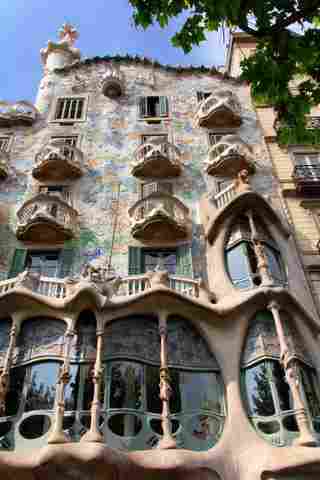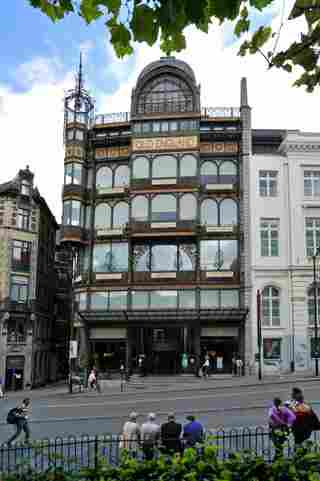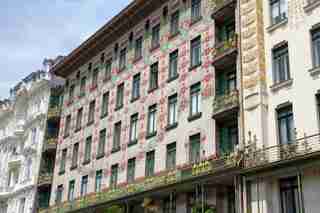Art Nouveau may go by many different names, but its look is unmistakable. Also known as Jugendstil, Stile Floreale, and Sezessionstil, the decorative arts-and-architecture movement flourished in Europe throughout the late 18th and early 19th centuries. Architects such as Hector Guimard and Antoni Gaudí became famous for their expressive, organic-inspired designs, which commonly featured colorful flourishes and detailed iron- and glass work. The interiors of Art Nouveau buildings were as ornate as their exteriors, and were decorated using exquisite materials, custom furnishings, and hand-painted wall treatments. Filled with romantic flair, the style emphasized craftsmanship over the industrialization that was occurring at the time. From Latvia to Scotland, gorgeous examples of Art Nouveau architecture can still be found around the world. Take a tour of these architectural wonders.

Casa Batlló, Barcelona
Antoni Gaudí brought his exuberant take on Art Nouveau to Barcelona, creating many of the city’s architectural landmarks . Casa Batlló, situated on the Passeig de Gràcia, is one of his best-known works and features allusions to the legend of St. George and the Dragon. Its exterior is sheathed in colorful pieces of broken ceramics, while the roof is covered in scalelike tiles.

The Old England Building, Brussels
Designed by architect Paul Saintenoy, the Old England building was constructed in 1899 and is considered one of Brussels’s Art Nouveau gems. The former department store now houses the Museum of Musical Instruments.

Majolikahaus, Vienna
Architect Otto Wagner was a key figure in the reinvention of Vienna at the turn of the 20th century. One of his most beloved works is the Majolikahaus apartment building, which was completed in 1898 and is decorated with vibrant floral motifs.
Glasgow School of Art, Scotland
One of Scottish architect Charles Rennie Mackintosh’s most important buildings was the Glasgow School of Art. Mackintosh blended Art Nouveau and traditional Scottish influences for the building, which was completed in two phases. The second phase included the iconic library and was finished in 1910.
The Secession Building, Vienna
Designed by architect Joseph Maria Olbrich, the white cubic building was constructed as an exhibition hall for the artists and designers of the Secessionist movement. The structure, which opened in 1898, is topped with a distinctive dome of gilt wrought-iron laurel leaves.
Agoudas Hakehilos Synagogue, Paris
One of the preeminent practitioners of Art Nouveau in Paris was Hector Guimard, who is perhaps best known for his ironwork entrances to the city’s Métro. Situated in the Marais district, Guimard’s Agoudas Hakehilos Synagogue (also referred to as Synagogue de la rue Pavée) was built in 1913 and has a exterior motif inspired by the Ten Commandments.
Albert Street, Riga
The Latvian city of Riga is celebrated for its astonishing amount of Art Nouveau buildings. One of its most prolific designers was Russian-born Mikhail Osipovich Eisenstein, who devised a number of these structures, including many of the highly ornamented apartment buildings on Albert Street.

Leave a Reply